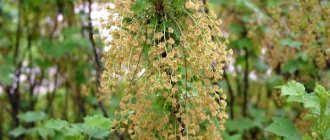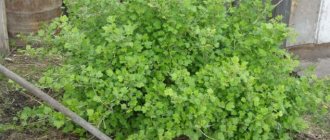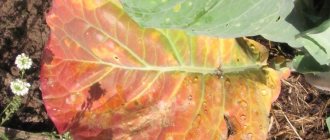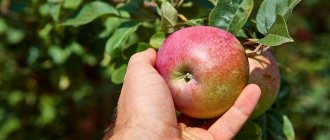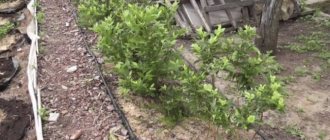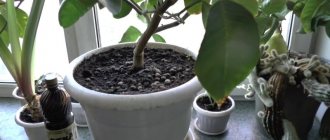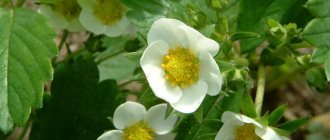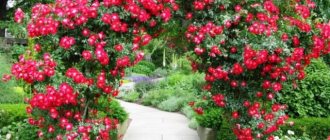Apricot is one of the unpretentious crops that require a minimum of care and annually delight the gardener with an abundance of delicious fruits. Most summer residents are faced with the cessation of fruit appearance on the tree. To understand why apricot does not bear fruit, it is worth analyzing the qualities of the area where the tree grows, caring actions, and the presence of pests and diseases.
Features to consider
Before planting a fruit tree, it is worth considering the features of the site. Productivity depends on the type of soil - apricots take root well on light loams, slightly alkaline, slightly carbonate soils with neutral acidity. The soil must contain humus, potassium, nitrogen and fluorine. Apricot plants began to be cultivated in the South, so the characteristics of the southern region will be ideal for it:
- location of the groundwater level at 10 m;
- uniform lighting from all sides;
- mandatory wind protection - a fence.
Do not forget about an integrated approach to growing - fertilizing, crown pruning, regular watering.
What factors influence the onset of fruiting?
The beginning of the appearance of the first apricot fruits depends on the type of reproduction:
- Vegetative. When propagating a crop by grafting, you can get the first harvest in 2-3 years. Game trees, blackthorn and even plums are suitable for rootstock. The use of cuttings 1-2 years old, which have already passed the juvenile stage, will significantly speed up the onset of fruiting.
- Seminal. Growing an apricot from a seed is a longer process, in which fruiting begins much later. The first fruits will not appear on seedlings younger than 5 years old, and sometimes flowering occurs only in the 7th year of growth.
Flowering and fruiting may occur later if the root collar is too deep and the planting site is chosen incorrectly.
The plant blooms but does not bear fruit
Gardeners are faced with a problem when the apricot tree blooms profusely, but the fruits do not form. There may be several reasons.
Lack of pollination
Some varieties cannot self-pollinate. The solution to the problem is to plant several cuttings of a similar type. Pollination may not occur if the flowering period occurs in a cool spring - bees do not fly in cold weather. To attract bees, gardeners use a trick - they plant early honey-bearing flowers between the trees, which attract insects.
Damage to plants by diseases
Stone fruit varieties do not produce fruit if moniliosis occurs, a fungal disease that causes flowers to wither and shoots to dry out. It can be prevented by preventive spraying with preparations containing copper in the autumn.
Insect pest infestation
Apricot trees often suffer from attacks by beetles and caterpillars - aphids, flower beetles, and codling moths. To effectively control pests, chemicals are used that are diluted in water and used to spray the tree.
Adverse weather conditions
Lowering the temperature helps reduce fruit formation. Frosts after early spring damage the buds - a large amount of barren flowers is formed. To prevent early bud break, experienced ones fumigate orchards. To ensure abundant fruiting, it is necessary to create all the conditions for the plant to live comfortably on the site - select the optimal soil composition, organize watering and fertilizing.
How to make an apricot bear fruit
The most determined part of gardeners solves the problem with an ax.
It should be noted that with an ax you can not only cut down a tree at the root. The older generation of gardeners uses this tool with more cunning. Several different acquaintances from the Voronezh region told me that with an ax you can reduce the scope of the roots, that is, simply cut them down. But you need to do this with a square. One side every year. And another folk sign is that if you hit an apricot tree on the trunk with a butt and make threats, it will definitely get scared and produce an excellent harvest the next year.
Most lovers of this fruit are looking for opportunities to give the fruit tree a second life. And, as a rule, they succeed in finding ways to do this.
You should not give up on a tree that does not bear fruit, since there are many ways to resume fruiting
Pollination
Of course, for a good harvest you need stable pollination of flowers, since most apricots are self-sterile. They need pollinators, so it is better to have at least 2 different varieties of trees in the garden. Sometimes, to save space, apricot lovers plant 2 apricots in one planting hole at once, which will grow side by side. This technique allows the branches of their crowns to intertwine and be pollinated even by a weak wind.
You can also graft cuttings from different varieties onto one tree or attract pollinating insects such as bees to the site.
Pollination during the active flowering stage requires the presence of bees.
Feeding and watering
The fall of an already appeared ovary can mostly occur from a lack of mineral nutrition. To prevent it, you need to remember to constantly moisturize and feed the plant throughout the season. It is most convenient to combine these processes with each other:
- You need to water the apricot for the first time in the spring before flowering starts. At the same time, fertilizers containing nitrogen are applied.
- The second time, fertilizing with nitrogen along with watering should be done exactly half a month after flowering ends.
- The third watering, combined with fertilizing, must be done a month after the ovaries appear, when the fruits begin to fill. From this moment on, fertilizing containing phosphorus and potassium will be required.
- It is important to do the fourth watering with simultaneous fertilizing after the harvest has been harvested and flower buds are already forming on the shoots for next year. This fertilizer should contain only phosphorus-potassium fertilizers.
It is important to keep in mind that any nitrogen-containing compounds will damage apricots in the second half of summer.
Professor Kolomiets' method
The method of Doctor of Sciences Kolomiets is based on intensive feeding of trees. Back in the forties of the last century, with the help of fertilizing, he managed to get even one-year-olds to bear fruit (in the second spring after grafting). At the same time, the trees subsequently increased their yield annually. The procedure for applying fertilizing is as follows:
- In mid-April: scatter 1–1.5 handfuls (for one-year-olds) or 1.5–2 (for two-year-olds) of azofoska (or nitrophoska) evenly in a circle near the trunk (70–80 cm in diameter) and embed it into the soil with a rake.
- In mid-May: the same fertilizer in the same doses.
- At the end of May: the same fertilizer in the same doses.
Fertilizing with azofoska stimulates apricot trees to bear fruit
Exactly the same method can be used to stimulate the productivity of mature trees that have already begun to bear fruit. In this case, the indicated dose should be increased to 5 handfuls per trunk circle.
Crown formation
If the inflorescences fall off after overnight frosts, it is no longer possible to help the current year's harvest. However, it is worth taking care of fruiting next year.
It is known that the best fruit harvest comes from last year's growth. Therefore, no later than the first ten days of June, young branches should be cut in half. If the shoot is weak, it can be cut off by a third or even a quarter.
When pruning in summer, it is recommended to decisively shorten the branches, if not by half, then by at least a third
After pruning the axillary buds of the tops, several shoots of the second wave of growth will appear at once. Young apricots usually produce stronger growth. Older trees will have slightly smaller and shorter shoots. But in any case, future flower buds will be formed on such growths.
These shoots will be covered with flowers next spring. And this will happen 8–12 days after the appearance of buds on old branches. This technique helps delay flowering and increase the chances that the frost will have passed. When spring night frosts destroy the newly opened buds on neighboring branches, the young shoots will slowly bloom, set fruit and produce an excellent harvest.
Video: pruning apricot
Padding
A popular method among gardeners is reupholstery. Its essence is that the tissues will not be able to fully conduct nutrition and the tree will start the reproduction mechanism.
It is better to carry out such an experiment by dragging a branch that, in case of failure, would not be a pity to remove.
Recent Entries
Lilac perennials that are beautiful, compact and do not crowd out other plants Why when buying seedlings you should not take the sellers’ word for it and how to determine the age of the plant using 3 signs Tomato seedlings have turned purple or whitish: why the color has changed and how to save the plants
The operation is carried out no later than May. Sequencing:
- Select the largest skeletal branches and at the very base.
- Tighten them with drapes or wire wrapped on top of the burlap.
- After 2 months, remove this loop.
The wood is tied with wire over burlap
This operation is simple and safe. The most important condition for its success is to remove the constrictions in time. Otherwise, the windings may grow firmly into the bark and form a wound.
Many lovers of experiments from different regions, without saying a word, confirm that already next year the tree will begin to bear fruit generously.
Banding
To carry out ringing, in late spring you need to select non-fruiting skeletal branches, then:
- Remove a strip of bark up to 2 cm wide from the base of the branch.
- Turn it over with the outer side down and secure it in place at the cut.
- Wrap the cutout area with film and be sure to remove it after 2 months.
When girding a branch, it will be important to carefully cut out a narrow strip of bark
During this time, the bark will grow to the trunk, and the supply of nutrients along the branch will be slightly suspended - this will stimulate the formation of new flower buds.
Remember that cutting a ring more than 2 cm wide is dangerous - the branch will become exhausted and gradually dry out.
It is important not to ring all large branches at once - this will be too stressful for the plant. From lack of nutrition, the apricot can die completely.
Also, the effect of this method does not occur as quickly as from constriction. The harvest after ringing will appear no earlier than in 2 years.
The neighbors who did the ringing last summer were already looking forward to making compotes this year. Imagine their disappointment when fruiting practically did not occur. However, this is not a reason to be upset; you need to wait another year. In addition, it has been noted that when ringing is used, the number of fruits on a branch will increase with age.
Preventing diseases and pests
Often, the lack of apricot harvest is due to diseases or pests that have taken up residence. Two percent Bordeaux mixture is a good remedy for such troubles. Preventive spraying with this drug is best done in late autumn and early spring, when the buds are still forming. This treatment not only protects apricot trees from ubiquitous pests, but also increases resistance to possible drops in temperature.
The negative experience of losing apricot fruits from previous years made us think about protecting the future harvest. Now every autumn (in October) chemical treatments are carried out in the garden. But the exact duration of these procedures is determined by each gardener individually, based on weather conditions and climate. Our main criterion is that the tree should not fly around completely. At the same time, you don’t have to worry about making mistakes with the weather - this drug is not washed off by rain and is not afraid of cold weather. For the third year already, regular spraying with two percent Bordeaux mixture has given good results.
To prepare Bordeaux mixture yourself, you need to combine slaked lime with copper sulfate. All garden centers have packages of copper sulfate in the required proportions. Packages:
- weighing 300 g is used to prepare a 3% solution of Bordeaux mixture;
- weighing 100 g - for 1% concentration.
Copper sulfate is used to prepare Bordeaux mixture
In advanced cases, you can call on fungicides to help:
- Topaz;
- Topsin;
- Horus.
They must be used strictly after studying the instructions on the package, no later than 3 days before flowering. The second treatment will be required after flowering, and the third, control, no earlier than half a month after the second.
Photo gallery: fungicides to combat apricot diseases
The drug Topsin is used to combat apricot diseases. Horus helps to cope with plant diseases. The drug Topaz is used to combat apricot diseases.
Video: how to properly prepare Bordeaux mixture
Treatment of apricot with a growth enhancer
Back in the first half of the last century, researchers F. Went and G. Erxleben discovered growth hormones in plants. They were called auxins (from the Greek - to increase).
Charles Darwin also played a significant role in the discovery: he discovered a substance in plants “which is affected by light and which transmits its action to the lower part of the plant.”
Auxins, according to the chemist's reference book, became the prototype of plant hormones.
Since almost the entire territory of Russia can be subject to late spring frosts, flowering trees can be protected by delaying the start of flowering. Preventive treatment of wood with an auxin solution reliably copes with this task.
Drugs
Nowadays, auxin-based preparations are actively sold in specialized stores and garden centers. Some of the most effective representatives of growth enhancers are Emistim or Charkor.
The broad-spectrum bioregulator Emistim is sold in the form of fungal metabolism products from plant roots. Growth substances are phytohormones of auxin and gibberellin nature. The drug is used for growing fruit and berry crops. This product increases plant resistance to stressful conditions and increases fruit yield.
Emistim increases the resistance of trees to adverse conditions
The root formation stimulator Charkor is a mixture of substances of natural origin and a complex of 2,6-dimethylpyridine-1-oxide with α-phenylacetic acid.
Charkor increases the growth rate of tree roots
The stimulator increases the density of primary roots and the rate of their growth, as well as the ripening of growth.
Charkor, like Emistim, belongs to the class of non-toxic drugs.
Soil analysis
The plant will not bear fruit if the characteristics of the soil in which it is planted do not meet the needs of the root system. Suitable for fruit trees are nutritious and loose soils. If the site does not have land with the required qualities, annual measures are taken to improve them:
- apply fertilizers from rotted manure, sand, organic waste by burying around the tree trunk;
- periodically loosen the bud to a depth of 15 cm for better penetration of water;
- If the soils have high acidity, it is necessary to reduce its level by adding a lime solution when watering.
The proven method of agronomists will help you determine the acidity level of the soil without special equipment or analysis. Beetroot is being planted on the plot. After germination, the tops are examined. If it is a rich red hue, there is acidity; if there is no redness, the earth has neutral characteristics.
The tree grows in unsuitable conditions
The place for the apricot seedling should be warm and sunny, protected from wind and drafts, and the soil should be light, loose and fertile, preferably loamy, neutral in acidity. Groundwater should not lie high, ideally no closer than 2 m from the surface. On excessively moist soils, be sure to arrange drainage.
Some gardeners advise painting the vertical surfaces closest to the apricot tree (fence, house wall) white so that reflected sunlight helps the plant receive more light and warmth, which it loves so much.
To prevent poor or insufficient pollination from causing the lack of apricot fruiting, attract more beneficial pollinating insects (bees, bumblebees) to the garden. To do this, plant nectar-bearing flowers in the spaces between the rows, which will bloom simultaneously with the apricot varieties you have chosen. Choose: clover, daisies, calendula, marigolds, sweet clover, dandelions, yarrow. Sometimes gardeners even resort to spraying the garden with a honey solution (1 teaspoon of honey per 1 glass of water), which also attracts insects.
- Bugs in the garden: how to distinguish beneficial insects and how to deal with harmful ones
Find out which insects on your property should not be destroyed.
To prevent the tree from freezing during a slushy or snowless winter, you should properly prepare it for the cold season. If necessary, carry out sanitary pruning of the apricot, then treat it with 3% Bordeaux mixture to protect against fungal infections, whiten the trunk and wrap the entire tree with dense agrofibre.
- Caring for apricots in the fall - preparing a capricious tree for the cold
How to prepare an apricot for winter? We will tell you about all the necessary procedures.
Watering the plant
Problems with fruit formation may begin if there is a lack of moisture. Consider the watering regime necessary for normal fruit formation:
- one-time watering involves adding at least 2-3 buckets of clean water to the tree trunk;
- the tree is watered from the beginning of spring, before flowering and budding;
- Plants need plenty of water during the period of active flowering, fruit ripening and after harvesting;
- It is recommended to end the watering season in October, before wintering;
- apricot does not tolerate stagnation of water at the root system. Do not add water after rain and do not plant in soil with close groundwater.
To maintain moisture at the root in dry weather, experienced gardeners recommend mulching the base of the tree with grass, hay, and peat.
The second reason and ways to solve it
Sometimes it is not the ovaries that fall off the apricot, but the flowers. But the ovaries simply do not form. Why is this happening?
First, most apricot varieties are self-sterile, meaning they require another apricot to pollinate successfully. Without an outside pollinator, nothing will grow on them, so you need to plant 2-4 apricots at once. If the area is small, plant two seedlings of different varieties in one hole, and you will have a double-trunked tree. Both crowns, being close to each other, will be well pollinated. They don't even need bees to do this, just a light breeze.
- Transplanting azaleas
Experienced gardeners solve this problem differently: they graft cuttings of other varieties onto apricots.
Now many self-fertile varieties have appeared, for example, Red-cheeked, but for them it is better to have another apricot in the neighborhood: pollination will be widespread and the harvest will be larger. Sometimes even a plum tree growing nearby can help pollinate an apricot tree.
Feeding young trees
The answer to the question of why young apricots do not bear fruit properly may lie in the insufficiently rich composition of the soil. In this case, it is necessary to apply a complex of fertilizers:
- Fertilizing plants with manure is recommended in the spring during the period of fruit formation;
- In summer, fertilizers containing phosphorus and potassium are used.
When growing apricot trees organically, chemical fertilizers are replaced with chicken droppings and ash. It is important to maintain a balance of nutrients in the soil to ensure the normal development of fruit trees.
Pests
Another problem with an apricot tree not producing fruit could be when the tree has bugs or pests. Sometimes they can eat small fruits (as soon as fruiting begins) or spoil already formed ones, after which they simply fall from the tree while still green.
Pests are usually small and invisible at first glance. If the apricot blossomed normally but there is no ovary, check for parasite larvae or signs of pests to ensure the real reason for the absence of apricots on the trees.
Crown formation
Formative pruning is necessary during the development of a young tree. An apricot seedling tends to grow upward quickly and does not always independently form a sufficient number of side shoots. Because of this, there is no appearance of fruit-forming flowers. To form a crown of the correct shape, you need to carry out the following types of pruning once a year, preferably in the spring before flowering and budding:
- formative - creates a beautiful crown;
- sanitary (removal of damaged shoots);
- anti-aging (required once every 3-4 years);
- regulating (controls the number of side shoots).
A combination of all types of trimmings and their application according to the above algorithm will help to form the correct crown. The abundance of side shoots guarantees a large number of flowers and ovaries.
Apricots are not watered or fed
Competent and careful care is the key to a good harvest. Lack of watering, fertilizing, weeding - all this can slow down the development of the plant and delay fruiting.
Fertilizers must be applied correctly.
For example, you should not overuse nitrogen in the hope that the plant will quickly increase its vegetative mass and there will be more fruits. Apricot, with an excess of nitrogen in the soil, actually actively increases the vegetative mass, but does not bloom or immediately after flowering drops the entire ovary.
Weather conditions: can they be influenced?
The southern heat-loving apricot is grown in regions with low climates. Trees at rest are practically not affected by frost. January and February thaws contribute to the early awakening of the crop and lead to active consumption of air by the roots. Under a layer of snow, the processes of absorption of nutrients are hampered, and the bark and roots are subject to diaper rash. You can fix the problem as follows:
- removal of excess snow from the tree trunk circle;
- avoiding the hole technique when planting.
Early spring means rapid flowering and the death of fruit ovaries as a result of nighttime drops in air temperature. To avoid the situation, they shift the flowering time by spraying the garden with auxin. At the end of February, you can treat the trees with a solution of 700 g of urea and 100 g of vitriol, diluted in 10 liters of water.
External conditions
A poor environment may be another reason for poor apricot fruiting. If the tree receives too little or too much water during flowering, or while the fruit is ripening, it may result in no ovary after flowering has dropped. Accordingly, there will be no fruit either.
Lack of nutrients such as phosphorus may also be the reason why your apricot tree is not blooming or producing fruit. Monitoring water and fertilizers can help improve this situation.
Radical methods of stimulating fruiting
Even when taking into account the land characteristics and ideal care, questions arise as to why apricots still produce barren flowers and do not bear fruit. In this case, you need to resort to drastic measures:
- The branches are bent at an angle of 60 degrees. The method is used when sap flow is disrupted, when the supply of moisture to the branch is difficult. It is important to firmly fix the shoot in an inclined state.
- Ringing the shoot. Performed to increase fruiting. You need to use a sharp knife to cut the tree bark without touching the inner wood, then remove the cut and treat the wound with garden varnish.
- Constriction of branches. Creates a stressful situation for the tree, forcing it to bear fruit. To carry out the procedure, you need to tightly pull the base of the branch with copper wire. It is recommended to loosen the constriction periodically to prevent the shoot from dying off.
It should be remembered that incorrect implementation of drastic measures can destroy the tree. Their use is recommended only after detailed consultation with an agronomist. Proper care of the apricot tree is the only sure way to abundant fruiting.
Improper watering and fertilization
In average weather in the middle zone, apricots are watered four times during the season:
- when the shoots begin to grow, it is usually mid-spring (April);
- when shoot growth is most intense - usually the end of spring (May);
- before fruit ripening - 2-3 weeks;
- in late autumn (moisture-charging irrigation).
Of course, this schedule needs to be adjusted depending on weather conditions. If the season is cold and wet, apricots do not need additional watering. And if the summer is dry and extremely hot, it won’t hurt to “water” the tree generously several more times, in addition to the above.
Water apricots in the morning or evening when there is no direct sun. Make sure that the water does not stagnate at the roots and that the soil is sufficiently loose. Remember about the golden mean - both drought and waterlogging (and especially a sharp change in these conditions) are equally harmful to apricots. In the first case, you will get dried out or unformed fruits, and in the second case, the fruits will burst. For one watering, 3-5 year old plants need 5-8 buckets of water, and 7-10 year old and older plants need 12-15 buckets.
Regular fertilization of apricots will also not harm. However, unless necessary, do not get carried away with fertilizing before the tree begins to bear fruit. Typically, trees are fertilized once a year: young ones are more suitable with organic matter (rotted manure diluted with water, humus - about 5 kg per tree), and for adults who have been bearing fruit for a long time - mineral complexes (for example, 800-900 g of superphosphate + 250 g of potassium chloride + 350 -370 g of ammonium nitrate per tree).
Depending on the composition of the soil in your area, the fertilizing scheme and the composition of the applied fertilizers can be adjusted, for example, add peat, lime, etc. every few years.
- How much lime should be added to the soil on the site
We tell you how to properly lime the soil.
Also, do not forget to get rid of weeds in a timely manner and remove leaves that have fallen in large quantities so that the roots do not rest under their “cushion”.
How to restore fruiting
Most problems with apricot fruiting are solvable, and the plant’s yield can be restored next season if the cause of the failure is correctly identified. To do this, you need to carefully examine the plant, change the care regimen and monitor changes in the development of the tree.
Soil analysis
To obtain a high yield, apricots must be planted on light, permeable soils, loams with neutral acidity. Acidic soil must be neutralized by adding lime during autumn digging.
If the soil is heavy, dense and clayey, it is recommended to improve its quality using the following measures:
- Dig up the soil from the tree trunks and mix with chopped green grass.
- Add rotted manure, compost, sand and sawdust to the soil.
- Loosen the soil after each watering.
- In autumn, dig up the soil to a depth of 0.15 m, and in spring - to 0.1 m.
Pest Control
To protect against insects during the flowering period, it is necessary to spray the crown with insecticides. Spraying mode:
- At the pink bud stage.
- 15-20 days after flowering ends.
- During the period when the excess ovary falls off.
- In 2 weeks.
The benefits and harms of apricot kernels, properties and contraindications for the body
Read
The main danger is the plum moth, which is effectively destroyed by drugs:
- "Confidor";
- "Aktara";
- "Intavir";
- "Coragen."
To prevent insects from becoming accustomed to extermination agents, it is recommended to alternate chemicals annually.
Protecting apricots from frost and bad weather
With the arrival of spring warmth, it is necessary to prevent the early awakening of the buds, since the night temperature is still dangerous for plants. A number of activities can help preserve apricots:
- When frost occurs, fumigation will help protect trees.
- In the fall, you can spray the trees with Auxin, and at the end of February - with a solution of urea or copper sulfate.
- With the onset of spring, you can remove excess snow to avoid steaming the root system.
- Pinching young shoots stimulates the growth of new fruit buds with later flowering.
Sanitary pruning
The crown of apricots actively grows upward, but poorly forms lateral shoots, which leads to the growth of fruits at the ends of skeletal branches. In the spring, before the sap begins to flow, it is recommended to shorten the side shoots to 0.4-0.5 m. It is advisable to completely remove the branches directed upward and thickening the crown. Skeletal branches need to be shortened every 3-4 years.
Watering rules
The watering regime for apricots is carried out according to the following scheme:
- Abundant moisture recharge during preparation for wintering.
- Before flowering begins.
- During the formation of ovaries, approximately in May.
- During the ripening of fruits and the formation of future buds.
We organize feeding for the tree
For proper development and active growth, it is necessary to apply suitable fertilizers on time:
- In spring, organic fertilizers rich in nitrogen, such as manure or compost, are applied to the soil.
- In summer, it is advisable to enrich the soil with phosphorus and potassium. They strengthen the immunity of apricots and improve the taste of the fruit. To maintain environmental friendliness, you can replace mineral fertilizers with wood ash and chicken droppings.
Stimulating pollination
Rain and fog can reduce the volatility of apricot pollen, which will reduce the rate of fertilization. In calm weather, you can help pollen by blowing the crown with a fan. Active pollination can be achieved by planting two different varieties of apricot in close proximity or in the same planting hole. Even in self-fertile varieties, yield increases significantly when pollinated by another type of apricot.
Cardinal methods
If changes in agricultural technology do not bring results, more stringent measures can be tried. Drastic methods of stimulating flowering are aimed at changing the movement of sap inside the wood. Such methods must be used very carefully so as not to completely destroy the apricot nutrition system. The physical effect on the tree is:
- bending branches;
- constriction;
- banding.
How to bend branches
To stimulate fruiting on empty branches, it is necessary to correctly perform the bending procedure:
- The time for work is in early spring, before the buds begin to swell, or in August.
- The branch should be bent from the trunk at an angle of 50-60°, tied to a peg or hanging a load.
- At the end of the season, you need to check the change in direction of growth.
It is important to remember that the branches should not form an arc, and the rope must be moved to avoid growing into the apricot bark
Why cherries don't bloom and how to fix it
Even birds love the sweet taste of cherries. There is a legend that it was birds who brought it in ancient times.
Nowadays, up to 4,000 varieties of cherries are grown in the world. In many countries it is sold in stores all year round and is always fresh. The French make wine from it.
Cherries are very healthy, they contain sugar, which is easily digestible, minerals and various vitamins, a small amount of vitamin C and nicotinic acid. This berry has a wonderful taste and is widely used in cooking. Its fruits strengthen blood vessels and are considered an excellent cure for anemia.
The cherry tree usually bears fruit annually. Various harmful insects attack it less than cherries. However, there are periods when cherries do not bear fruit. One of the reasons for this is the lack of flowering. Let’s try to figure out why the cherry tree doesn’t bloom now. Let's find out the most common reasons for this phenomenon, and why the tree does not produce a harvest.
One of the possible reasons for the lack of flowering buds in cherries is a poor root system of the tree or seedling. The reason for the underdevelopment of the root system of a fruit tree may be improper planting technology.
Another reason why cherries do not bloom is that the gardener chose the wrong place for planting. What you need to do to fix the error:
- the tree is planted on the south side of the dacha;
- the area where cherries grow must be protected from wind and drafts;
- it cannot be planted near other trees, they will create shadow, but cherries love the sun;
- the tree needs to be rooted in light, airy soil;
- it cannot be planted close to groundwater, as this will cause the roots to rot and, as a result, the tree will not produce a harvest.
Another possible reason is that the landing was carried out incorrectly. If the gardener does not have experience, then it is likely that he will plant the tree incorrectly. To get a good harvest when planting, you must follow the instructions:
- make a hole for the cherry seedling 60 cm deep and 80 cm wide. Add a little humus and fertilizer to it;
- the root collar should be at soil level. It cannot be buried very deeply;
- You need to make a shaft around the seedling and water the soil well where the cherry will grow.
Too much or little moisture is also one of the reasons why a tree does not bloom or bear fruit. In the summer, the tree is watered three times, the soil needs to be loosened a little, and in the autumn it is necessary to irrigate.
The tree may also not be pollinated, which is also worth noting as a reason. Many varieties of sweet cherries need to be planted next to cherries, as they do not pollinate themselves, and they must be near other trees to do so. When there are no cherries near the cherry tree, it will not bloom or bear fruit.
Over the past fifteen years, cherries have begun to be grown in the Moscow region. It tolerates winter very well and bears fruit well. But to plant a tree, it is advisable to choose a place that is protected from the north wind. It is best to plant cherries on the south side of the house. The walls of the house will protect the tree from the wind.
Of the many interesting varieties, it is necessary to highlight the columnar cherry, which has taken root well on the soil of the Moscow region and in places with a similar climate. The name “columnar” speaks for itself. The tree has a unique shape in the form of a column, the trunk grows 3-4 m upward, the fruiting skeletal branches are very short, the crown is in the form of a cylinder.
Now that we have told you what reasons affect the flowering of cherries, you will definitely eliminate them, and then in 2-3 years you will be able to enjoy its beautiful flowering and eat its sweet fruits.
https://youtube.com/watch?v=fe5fbOEw0qg
Excess or lack of nutrition during fruiting
Excess nitrogen
An excess of nutrients for apricots, especially nitrogen, can create a fattening effect. When vegetative buds are formed to the detriment of flower buds. Consequently, apricot fruiting is significantly reduced. To prevent fattening of apricots, high doses of fertilizers, especially nitrogen-containing mineral and organic fertilizers, should be avoided. When fattening, according to popular experience, tapping on the tree trunk, some surgical techniques, and bending branches help. In the author’s opinion, abundant watering is advisable in order to wash out part of the nutrition from the upper layers of the soil. This method will improve the fruiting of apricots.
Lack of boron and phosphorus
In principle, problems with fruit set are possible due to a deficiency of certain nutrients - boron, phosphorus. If during the year, before flowering, no one applied fertilizer to the apricot, then you can arrange foliar feeding. It will help increase apricot fruiting.
Use a boric acid solution or Uniflor-micro microfertilizer to set fruit. A solution of superphosphate extract or a solution of potassium monophosphate will also help. You can also add a fruit set stimulator to the solution - Ovary, Bud. This will also help increase apricot fruiting. Spraying with this mixture is advisable during the flowering period. The solution should be made in the same concentration as for plums, approximately 1 packet per 1 liter. From a physiological point of view, the effect of the drugs will be greater in apricots prone to parthenocarpy (when fertilization occurs without pollination).
Apricot care: general rules
For two years after planting apricot seedlings, the tree trunk area should be constantly loosened and mulched. Weeds are cleared regularly. They loosen the soil to a depth of 6-8 cm, because if you drip deeper, you can hit the root system.
Organic and phosphorus-potassium fertilizers are usually not applied to the soil before fruiting begins.
As soon as the apricot tree begins to bear fruit, the following fertilizer composition will need to be added to the soil annually:
- Ammonium nitrate - 30 g.
- Superphosphate - 8 g.
- Potassium salt - 20 g.
The calculation is made per 1 square meter of tree trunk circle.
Nitrogen fertilizers are applied every year at a rate of 20-30 g per 1 square meter. This is done in the spring and after fruiting, in half the dosage.
Apricot
Despite the importance of the presence of nitrogen in fertilizers, its excess leads to the following negative consequences:
- apricot resistance to diseases decreases;
- leads to gum formation;
- fruits ripen with a delay;
- extra-long growths appear (up to 100 cm).
On a note. If the region is dominated by heavy acidic soils, then adding calcium will be beneficial.
There is a deadline for organic fertilizers - every 3-4 years, but if there is sod, they are not needed at all. It is recommended to use liquid fertilizers. If they are dry, then they are poured into the grooves immediately before watering.
Note! Abundant watering will be necessary during the period of hardening of fruit seeds, their active growth and shoot growth. If the tree is overloaded with fruits, then next year the harvest will be scanty and with small apricots
To avoid this, you need to trim the crown every year in spring. You can also manually thin out the fruits after setting them.
If the tree is overloaded with fruits, then next year the harvest will be scanty and with small apricots. To avoid this, you need to trim the crown every year in spring. You can also manually thin out the fruits after setting them.
Phytosanitary hygiene of apricot trees involves the following actions:
- Diseased branches and shoots are removed and subsequently burned.
- The wounds are cleaned, disinfected and putty.
- Carrion, sick and bad crops are collected and also burned.
- Do the same with diseased leaves.
- Every year in the fall or as soon as early spring arrives, the stem part of the apricot is disinfected with lime.
Fruiting shoots of apricot
As the seedling develops, branches grow on it and perform various functions. In addition to vegetative shoots bearing the green mass of leaves, overgrown fruit-bearing shoots appear on skeletal and semi-skeletal branches during the growing season. Leaf and flower buds form on them. Fruit ovaries are formed from flower buds mainly on bouquet branches and spurs:
- a bouquet branch (also called a spear) is a short (3–8 cm) spiny process, on the side surface of which flower buds are formed. These buds are collected in a kind of bouquet and located close to each other. The apical bud of a bouquet branch is leafy. These shoots appear when the apricot is two to three years old, live and bear fruit for three to four years, then gradually dry out and fall off;
- spurs are short fruit shoots from 1 to 6 cm long. The location of the buds on the shoot is identical to bouquet branches. The peculiarity of spurs is that their flower buds are smaller and are not collected in bouquets, but grow singly.
Apricot also bears fruit, but to a lesser extent, on fruit twigs - annual growths more than 15 cm long, mainly with flower buds.
Plum diseases that reduce yield
The reason for the lack of harvest on plums may be clasterosporiasis and moniliosis.
Clusterosporia blight mainly affects leaves. Rusty spots appear on them, which subsequently dry out and crumble. It was as if they had gone through the sheet with a hole punch. On fruits, this disease manifests itself in the depression of part of the fruit. These places begin to dry down to the very seed, and the plum loses its taste.
Moniliosis is a disease that mainly affects cherries, but it can also greatly harm plums. As with cherries, infection occurs during flowering and appears during fruit set. The branches seem to be burned, the leaves and fruits first wither, then dry out, remaining on the branch.
As a preventative measure, it is necessary to spray, for example, with Skor or Horus. Treatment is carried out before and after flowering.
During the season, monitor the condition of the plant; if signs of monilial burn appear, cut out and burn the infected branches.
Fruit rot is another unpleasant fungal disease. The harvest promises to be great, but you suddenly notice that the fruits begin to rot right on the branch, become covered with mold and, when dry, do not fall off.
This disease can be prevented if, in addition to spring spraying, you regularly remove diseased fruits from trees without waiting for them to completely rot and dry.
